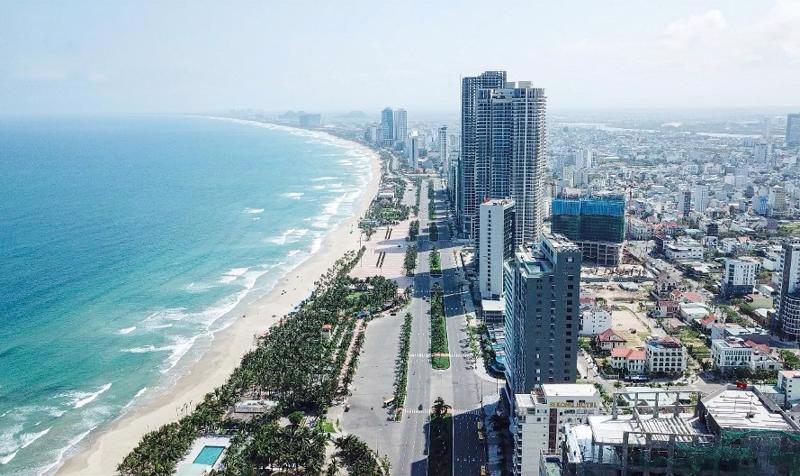A recent report by the Vietnam Real Estate Research Institute (VIRES) highlighted a strong recovery in Da Nang’s real estate market, fueled by economic growth, urban planning, and infrastructure expansion.
Key drivers of this resurgence include plans to establish a twin-headquartered international financial center in Ho Chi Minh City and Da Nang, a free trade zone, and administrative unit restructuring policies in the latter city.
A potential merger with Quang Nam province could transform Da Nang into Vietnam’s largest centrally-governed city in terms of area, spanning nearly 12,000 sq.km, with the country’s longest coastline (over 200 km), two airports, and a strengthened role as the Central region’s economic powerhouse.
The southeastern coastal corridor—stretching from Son Tra, My Khe, and Ngu Hanh Son to Hoi An and the Chu Lai Open Economic Zone—is poised to become the central artery of the newly expanded city of Da Nang.
This corridor will serve as a key transport link, facilitating movement between Da Nang and Quang Nam. Projects along this route are expected to become prime locations, attracting residents and businesses alike.
This strategic expansion positions the region for explosive growth, making it a high-potential investment hub for affluent buyers. Among the most sought-after assets are sea-view apartments, which are expected to lead the next development cycle due to their clear legal status and alignment with Da Nang’s sustainable and high-end urban planning goals.
Additionally, the VIRES report highlights a growing trend among elite buyers, including successful entrepreneurs, foreign professionals, and global investors, choosing coastal cities like Da Nang as their preferred destination. They seek not only secure investment opportunities but also an ideal living environment, defined by: proximity to the sea, mild climate, comprehensive amenities, and transparent legal frameworks.









 Google translate
Google translate